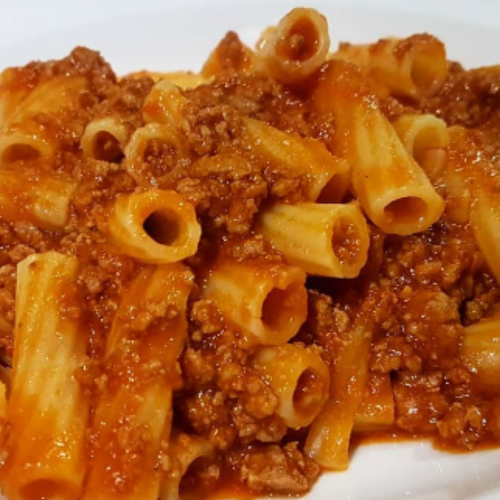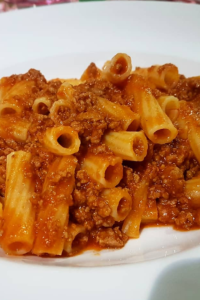Instructions
Step 1: Prepare the Lamb
Heat the Oil: In a large Dutch oven, heat the olive oil over medium-high heat.
Brown the Lamb: Add the lamb pieces to the pot in batches, browning them on all sides. This takes about 5-7 minutes per batch. Transfer the browned lamb to a plate and set aside.
Step 2: Build the Base
Sauté Vegetables: In the same pot, add the chopped onion, carrots, and celery. Sauté for about 5-7 minutes, stirring occasionally, until the vegetables are softened.
Add Garlic: Stir in the garlic and cook for another minute until fragrant.
Step 3: Deglaze and Simmer
Deglaze with Wine: Pour in the red wine, scraping up any browned bits from the bottom of the pot. Allow the wine to simmer and reduce by half, about 3-4 minutes.
Add Tomatoes and Broth: Add the crushed tomatoes, beef broth, bay leaf, rosemary, and thyme. Stir to combine.
Return Lamb to Pot: Place the browned lamb back into the pot and bring the mixture to a simmer.
Simmer the Ragù: Reduce the heat to low, cover, and let the ragù simmer for 2 hours. Stir occasionally and check for tenderness.
Step 4: Adjust and Finish the Sauce
Check for Tenderness: After 2 hours, the lamb should be tender and the sauce thickened. If it’s still too thin, uncover the pot and let it simmer for an additional 10-15 minutes until the sauce reaches your desired consistency.
Season to Taste: Remove the bay leaf, then season the ragù with salt and pepper as needed.
Step 5: Cook the Pasta
Boil Water: In a large pot, bring salted water to a boil.
Cook Pasta: Add the pasta and cook according to package instructions until al dente.
Drain and Combine: Drain the pasta and add it directly to the pot with the ragù, stirring well to coat.
Step 6: Serve
Plate and Garnish: Serve the pasta topped with additional sauce. Sprinkle with freshly grated Pecorino Romano or Parmesan, if desired.
Let Stand: Allow the dish to sit for 5 minutes to let the flavors meld before serving.
Variations, Tips, and Substitutions
Vegetable Substitution: If you don’t have lamb, try ground beef or pork for a similar flavor profile.
Herb Variation: Basil or Italian parsley can replace rosemary and thyme for a slightly different herbaceous note.
Gluten-Free Option: Use gluten-free pasta to make this dish celiac-friendly.
Wine-Free Option: Substitute an extra cup of broth if you prefer not to use wine.

